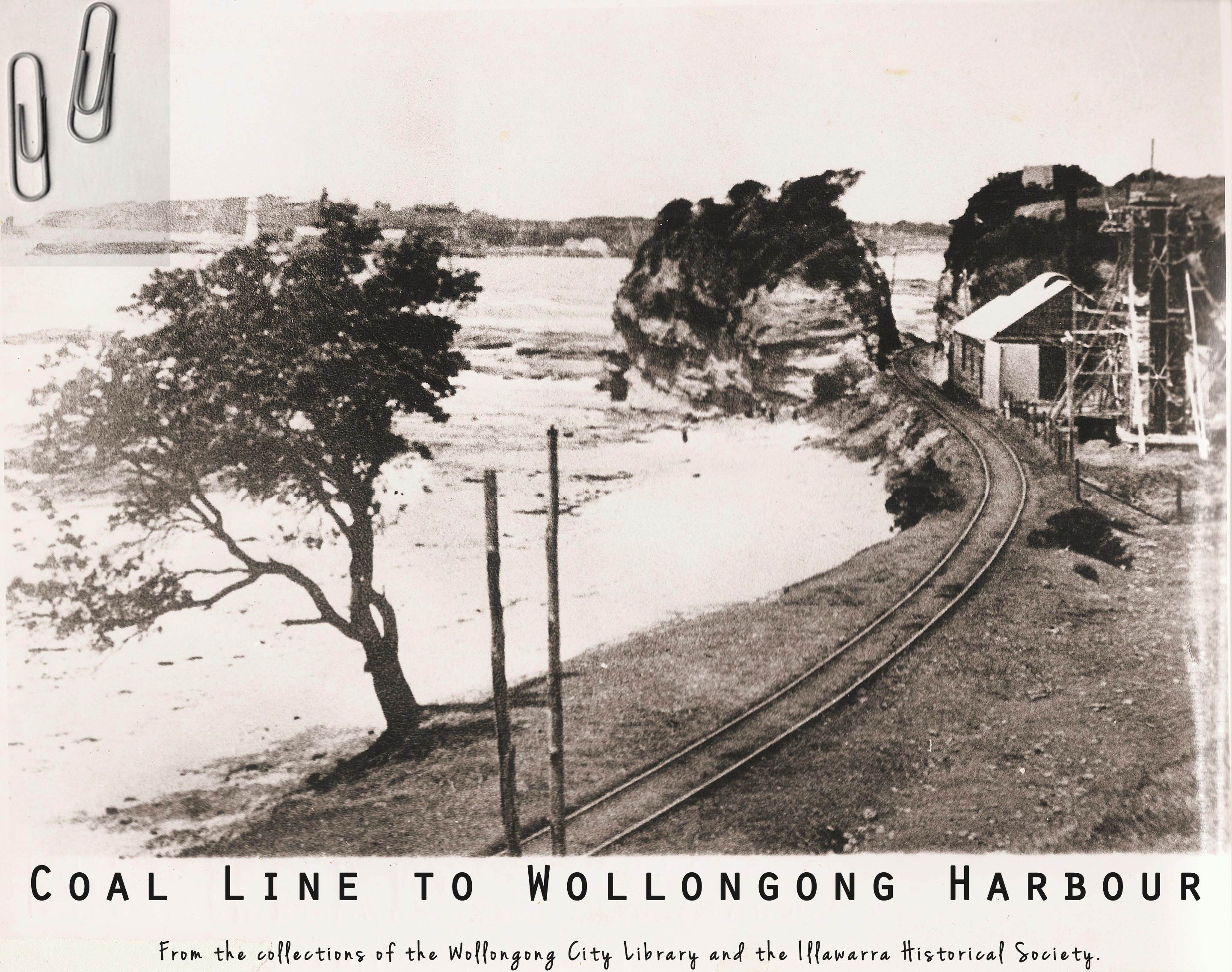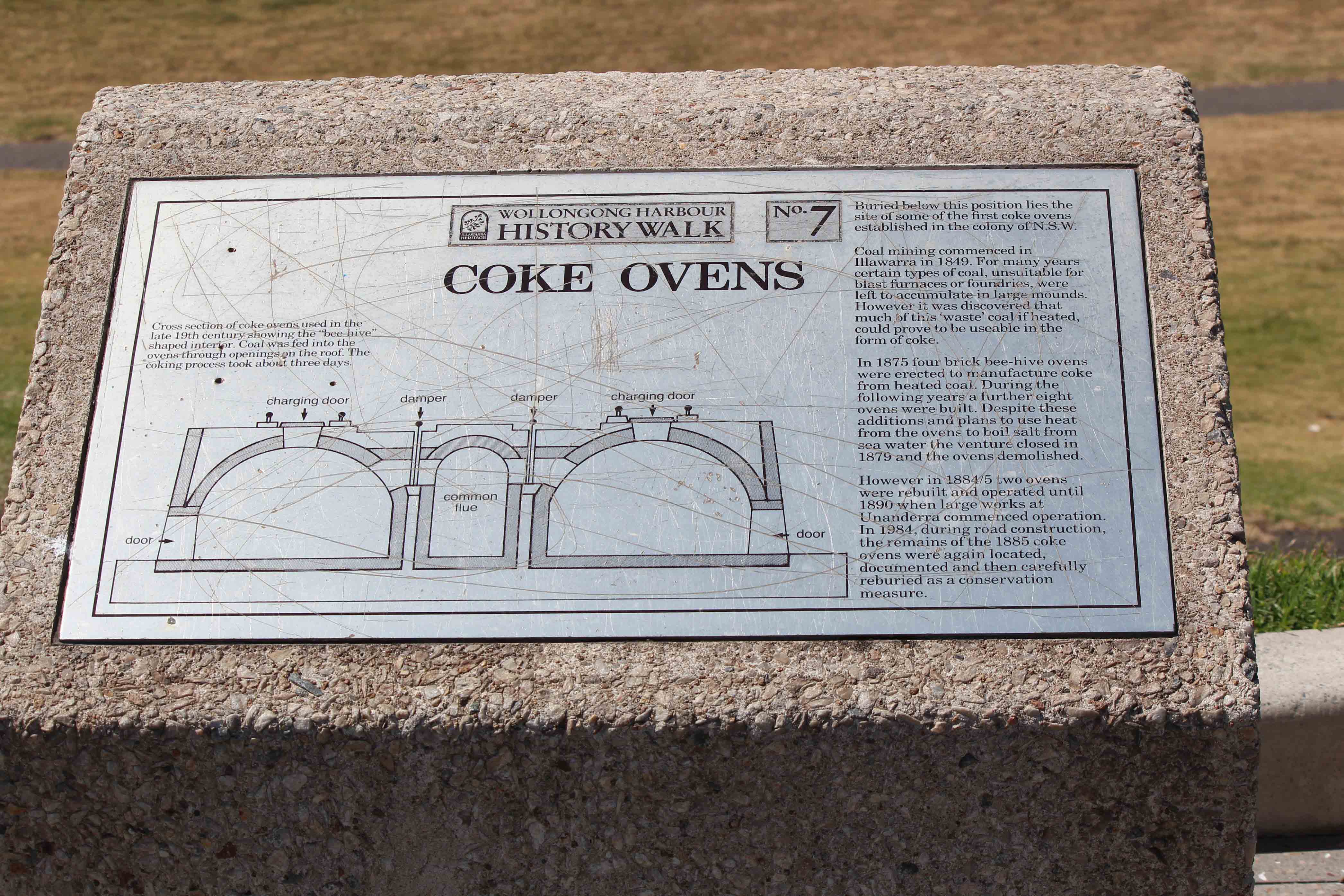
During the early 1820’s, there was a focus upon timber and quantities of cedar supplies in the Illawarra. In 1826, cedar was being exported from Belmore Basin. In 1857, the established agricultural exports of Belmore Basin included butter, livestock, bacon, pork, hides, leather, tallow, wheat, flour, bran, maize, barley, poultry, eggs, onions and potatoes. The timber trade began declining around this time, however, the coal trade was increasing, (where coal was exported from the Osborne-Wallsend Mine at Mount Keira).
In 1860, the Mt Keira mine was reported on by the Illawarra Mercury, as having produced 14,244 tonnes of coal. The impact of the increasing coal trade at the harbour was most evident between 1861-1938. The harbour was encircled by railway lines, taking coal from the Mt Keira and Mount Pleasant mines, then to the five timber coal staiths, for high level loading onto sailing ships and coastal steamers. The escalating level of trade activity at the harbour reduced the public amenity and appeal of the area. This was a strong factor for the move of the town focus to Market Square (and subsequently Crown Street) during the 1850’s.
In 1875, William Ahern and James Osborne built two beehive coke ovens at Wollongong Harbour, on the rock platform, to the north of Flagstaff Hill. The intention was to burn coal to form coke and use the heat produced to produce salt in salt pans by evaporating sea water.
In 1876 the first cargo of coke, (10 tonnes) was shipped in the ship “Lady Emma”. The works operated a branch line from the upper level of tracks. The construction of the 1881 sea wall required the ovens to be demolished and a second set of ovens were built back from the tidal zone. These were operated by William Ashley until 1890. Remnant sections of two of Ashley's 1884 brick bee-hive ovens have survived beneath the 1984 ramp road connecting the Harbour to Endeavour Drive, Flagstaff Hill. This site was later archaeologically recorded, back filled and sign posted in order to conserve the ovens. The Government has recognised the significance of the Coke Oven site and has committed its ongoing preservation.
In 1885 Wollongong Harbour cleared 1,624 vessels and it was ranked the third major port in NSW (behind Sydney and Newcastle). Despite this, the harbour was operating beyond capacity, requiring the Harbour Full Flag – Stand Off Shore Flag to be flown. Coal was the single major export, however the district’s rural produce, particularly butter for the Sydney market, was also handled in large quantities (with an average 1,600,000 pounds of butter exported in 1885). Prior to the opening of the government railway from Sydney, in 1887, the district relied on the ships to supply general imported merchandise, as well as building stone, equipment for the town, farms and mines (such as machinery, explosives, materials and tools for the railways, including the early locomotives and carriages).
The Harbour is now used by fishermen, with trawlers unloading at the Fishermen’s Co-op. Here fish are weighed, iced, tagged and placed in the cool room, before awaiting road transport to markets or the local processing factory owned by Better Choice Fisheries. The boats go out to sea for about 16 hours each day to their designated fishing ground. A proportion of the catch is sold locally, however, the majority is sold at the Sydney Fish Markets. The tuna fleet also operates out of the harbour for up to 6 months of the year, as they follow the seasonal migration. The tuna is not handled by the Co-op as the main product is sashimi, and is subject to specific food handling requirement for raw food products.



